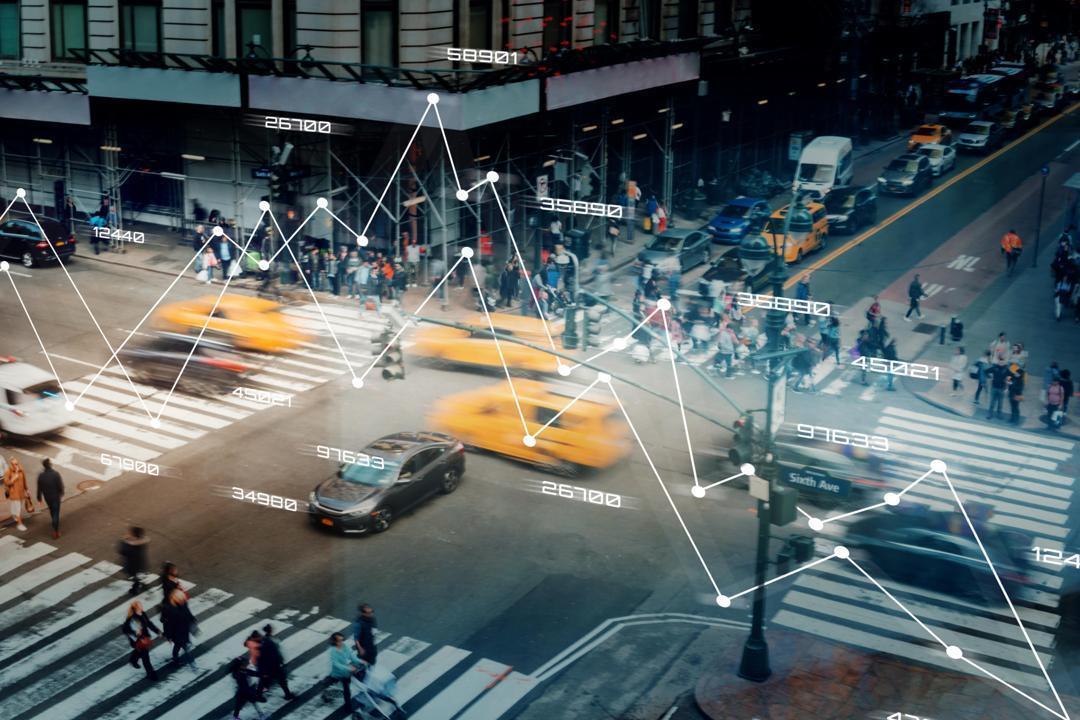You have not yet added any article to your bookmarks!

Join 10k+ people to get notified about new posts, news and tips.
Do not worry we don't spam!

Post by : Anis Farhan
Photo: Freepik
In 2025, the global conversation around digital development has shifted from apps and devices to infrastructure—not in the traditional sense of roads and bridges, but in the form of foundational digital systems that power public services, financial inclusion, healthcare, and civic engagement.
At the center of this movement is a concept known as Digital Public Infrastructure (DPI)—open, interoperable platforms that allow governments, businesses, and civil society to co-create and deliver services at scale. From digital identity and payments to data exchange and social protection, DPI is transforming how the state connects with its people.
Three regions—India, Brazil, and parts of Africa—have become laboratories for these new models, offering powerful lessons on how countries can leapfrog legacy systems and deliver 21st-century governance that’s fast, transparent, and inclusive.
Unlike commercial digital platforms owned by corporations, DPI refers to government or public-led digital systems that act as the backbone for service delivery. It typically includes three key layers:
Digital Identity: Unique, secure ID systems that allow individuals to authenticate themselves and access services.
Digital Payments: Infrastructure for transferring money efficiently between individuals, businesses, and the government.
Data Exchange: Platforms that allow different systems (healthcare, banking, education) to safely share data with consent.
What makes DPI transformative is its reusability—once built, it can serve multiple purposes across sectors. It’s like a highway system: open for many to use, but with clear rules and public oversight.
India’s DPI model, often referred to as the India Stack, is considered a global benchmark. It comprises four layers:
Aadhaar: A biometric digital ID system covering over 1.3 billion citizens.
UPI (Unified Payments Interface): A real-time payments system now handling over 10 billion transactions per month.
DigiLocker: A cloud-based document wallet for education, healthcare, and tax records.
Account Aggregator Framework: Allows individuals to control and share their financial data securely.
In 2025, India’s DPI powers everything from government subsidies and COVID vaccination certificates to school enrollment and digital lending. Farmers receive crop insurance via UPI; students access transcripts on DigiLocker; small vendors use QR codes to receive payments.
The model’s open architecture has spurred massive private-sector innovation, while keeping the core rails under public ownership. India now offers technical support to over 20 countries adopting similar systems under the Modular Open Source Identity Platform (MOSIP) initiative.
Brazil’s DPI model focuses on creating a single entry point for all public services through its platform gov.br. In 2025, over 140 million Brazilians use this portal to access everything from driving license renewals to tax filing and social benefits.
Paired with PIX, Brazil’s instant payment system launched by its central bank, the government now processes everything from pension disbursements to small business loans digitally, without intermediaries.
Brazil’s innovation lies in its citizen-first design. The interface is available in multiple languages, optimized for mobile, and integrates seamlessly with public databases like social security and tax records. Unlike traditional bureaucracies, gov.br is built like a startup—agile, user-centric, and constantly iterating.
Africa’s experience with DPI is more diverse, but equally instructive. Countries like Rwanda, Kenya, and Nigeria are building modular, interoperable systems instead of one centralized platform.
In Rwanda, Irembo serves as a one-stop e-government portal where citizens can apply for birth certificates, driving permits, and even livestock permits. Kenya’s eCitizen platform is expanding beyond Nairobi, helping citizens in rural counties access services with fewer delays.
The continent is also pioneering DPI for health and humanitarian services. In 2025, African Union’s Smart Africa initiative supports a continent-wide digital ID framework, while the World Bank and African Development Bank fund DPI infrastructure in fragile states and refugee zones.
What sets Africa apart is its mobile-first and decentralized approach. With over 75% of digital access occurring via mobile phones, governments are designing DPI for low-bandwidth environments, offline verification, and multilingual user interfaces.
Digital public infrastructure is not just a tech trend—it’s a catalyst for inclusive development. When properly implemented, it enables:
Faster, fairer service delivery
Targeted social protection (e.g., food subsidies, disaster relief)
Financial inclusion for the unbanked
Data ownership and control for citizens
Trust in government through transparency and accountability
In India, UPI has empowered millions of micro-entrepreneurs, reducing reliance on cash and informal credit. In Brazil, instant payments through PIX have reduced payment delays to social workers and gig workers. In Africa, DPI is helping health ministries track vaccine delivery and epidemic outbreaks in real time.
Yet DPI is not without its challenges. Key among them are:
Data Privacy: Without strong safeguards, DPI can lead to surveillance and misuse. India has faced criticism for weak data protection laws despite Aadhaar’s scale.
Digital Divide: Access remains uneven, especially for elderly, rural, or disabled populations. DPI must be inclusive by design.
Capacity Gaps: Many governments lack the skilled workforce to maintain and scale DPI.
Vendor Lock-in: Relying on private contractors without open standards can reduce transparency and sustainability.
Civil society watchdogs are calling for human rights–based DPI, where open source, interoperability, and community oversight are non-negotiable.
In 2025, global institutions are beginning to see DPI as a public good. The World Bank, Bill & Melinda Gates Foundation, and UNDP have launched a Digital Public Infrastructure Alliance, supporting countries with funding, open standards, and technical support.
Cross-learning is on the rise: India is helping Sri Lanka set up its UPI clone; Brazil is advising Argentina on a social registry system; Kenya and Ghana are co-developing health data platforms.
The goal is clear: no country should have to build digital foundations from scratch. Open code, shared templates, and collaborative communities are key to scaling DPI globally.
This article is for informational purposes only. It does not constitute legal, governmental, or technological advice. For official updates, consult national digital transformation agencies or multilateral development institutions.










Akshaye Khanna exits Drishyam 3; Jaideep Ahlawat steps in fast
Producer confirms Jaideep Ahlawat replaces Akshaye Khanna in Drishyam 3 after actor’s sudden exit ov

Kapil Sharma’s Kis Kisko Pyaar Karoon 2 to Re-release in January 2026
After limited screens affected its run, Kapil Sharma’s comedy film Kis Kisko Pyaar Karoon 2 will ret

Hrithik Roshan and Saba Azad Celebrate Christmas at Family Party
Hrithik Roshan and Saba Azad celebrated Christmas at Sussanne Khan’s party, sharing happy moments wi

China Sanctions 20 US Defense Firms Over Taiwan Arms Sales Dispute
China imposes sanctions on 20 US defense companies and 10 executives for supplying arms to Taiwan, e

Salman Khan’s Grand 60th Birthday Bash at Panvel Farmhouse Shines Bright
Salman Khan celebrates his 60th birthday with a grand party at Panvel farmhouse, sharing joyful mome

Thailand Defence Minister Joins Talks to End Deadly Border Clash
Thailand’s defence chief will join talks with Cambodia as border clashes stretch into a third week,